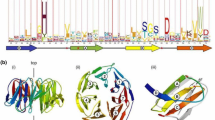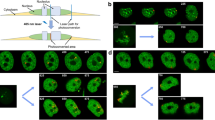Abstract
The preparatory pairing of homologous chromosomes is the obligatory step of meiosis. It occurs through formation of synaptonemal complexes (SC): the protein axes of two chromosomes are connected with the help of additional “central space proteins.” These proteins are sometimes species-specific and serve as the object of comparative studies. With the help of bioinformatics methods, we studied proteins structuring the SC central space in animals and fungi. We established that Ecm11 and Gmc2 had a low level of conservation even within the taxon of Ascomycetes. The SIX6OS1 protein of the mouse, as well as SYCE1–SYCE3 and TEX12 in animals, was moderately conserved only within the subphylum of vertebrates, despite these proteins (with the exception of SYCE3) occurring in invertebrates too. Thus, we have confirmed the thesis that, in addition to the common set of meiotic proteins, every evolutionary line of Eukaryotes has developed its own proteins for the formation of SC, the general structure of which is common between all eukaryotes.




Similar content being viewed by others
REFERENCES
Page, S.L. and Hawley, R.S., The genetics and molecular biology of the synaptonemal complex, Annu. Rev. Cell Dev. Biol., 2004, vol. 20, pp. 525—558. https://doi.org/10.1146/annurev.cellbio.19.111301.155141
Gao, J. and Colaiácovo, M.P., Zipping and unzipping: protein modifications regulating synaptonemal complex dynamics, Trends Genet., 2018, vol. 34, pp. 232—245. https://doi.org/10.1016/j.tig.2017.12.001
Zickler, D. and Kleckner, N., Meiotic chromosomes: integrating structure and function, Ann. Rev. Genet., 1999, vol. 33, pp. 603—754. https://doi.org/10.1146/annurev.genet.33.1.603
Moses, M.J., Chromosomal structures in crayfish spermatocytes, J. Biophys. Biochem. Cytol.,1956, vol. 2, pp. 215—219. https://doi.org/10.1083/jcb.2.2.215
Cahoon, C.K. and Hawley, R.S., Regulating the construction and demolition of the synaptonemal complex, Nat. Struct. Mol. Biol., 2016, vol. 23, pp. 369—377. https://doi.org/10.1038/nsmb.3208
Schmekel, K. and Daneholt, B., The central region of the synaptonemal complex revealed in three dimensions, Trends Cell Biol., 1995, vol. 5, pp. 239—242. https://doi.org/10.1016/s0962-8924(00)89017-0
Hawley, R.S., Solving a meiotic LEGO puzzle: transverse filaments and the assembly of the synaptonemal complex in Caenorhabditis elegans, Genetics, 2011, vol. 189, pp. 405—409. https://doi.org/10.1534/genetics.111.134197
Collins, K.A., Unruh, J.R., Slaughter, B.D., et al., Corolla is a novel protein that contributes to the architecture of the synaptonemal complex of Drosophila, Genetics, 2014, vol. 198, pp. 219—228. https://doi.org/10.1534/genetics.114.165290
Costa, Y., Speed, R., Ollinger, R., et al., Two novel proteins recruited by synaptonemal complex protein 1 (SYCP1) are at the centre of meiosis, J. Cell Sci., 2005, vol. 118, pp. 2755—2762. https://doi.org/10.1242/jcs.02402
Hamer, G., Gell, K., Kouznetsova, A., et al., Characterization of a novel meiosis-specific protein within the central element of the synaptonemal complex, J. Cell Sci., 2006, vol. 119, pp. 4025—4032. https://doi.org/10.1242/jcs.03182
Schramm, S., Fraune, J., Naumann, R., et al., A novel mouse synaptonemal complex protein is essential for loading of central element proteins, recombination, and fertility, PLoS Genet., 2011, vol. 7. e1002088. https://doi.org/10.1371/journal.pgen.1002088
Gόmez,-H. L., Felipe-Medina, N., Sáchez-Marti, M., et al., C14ORF39/SIX6OS1 is a constituent of the synaptonemal complex and is essential for mouse fertility, Nat. Commun., 2016, vol. 7, article number 13298. https://doi.org/10.1038/ncomms13298
Humphryes, N., Leung, W.-K., Argunhan, B., et al., The Ecm11–Gmc2 complex promotes synaptonemal complex formation through assembly of transverse filaments in budding yeast, PLoS Genet., 2013, vol. 9. e1003194. https://doi.org/10.1371/journal.pgen.1003194
Voelkel-Meiman, K., Cheng, S.-Y., Morehouse, S.J., and MacQueen, A.J., Synaptonemal complex proteins of budding yeast define reciprocal roles in MutSγ-mediated crossover formation, Genetics, 2016, vol. 203, pp. 1091—1103. https://doi.org/10.1534/genetics.115.182923
Fraune, J., Schramm, S., Alsheimer, M., and Benavente, R., The mammalian synaptonemal complex: protein components, assembly and role in meiotic recombination, Exp. Cell Res., 2012, vol. 318, pp. 1340—1346. https://doi.org/10.1016/j.yexcr.2012.02.018
Bogdanov, Y.F., Grishaeva, T.M., and Dadashev, S.Y., Similarity of the domain structure of proteins as a basis for the conservation of meiosis, Int. Rev. Cytol., 2007, vol. 257, pp. 83—142. https://doi.org/10.1016/S0074-7696(07)57003-8
Grishaeva, T.M. and Bogdanov, Y.F., Conservation and variability of synaptonemal complex proteins in phylogenesis of eukaryotes, Int. J. Evol. Biol., 2014, vol. 2014, article number 856230. https://doi.org/10.1155/2014/856230
Fraune, J., Brochier-Armanet, C., Alsheimer, M., and Benavente, R., Phylogenies of central element proteins reveal the dynamic evolutionary history of the mammalian synaptonemal complex: ancient and recent components, Genetics, 2013, vol. 195, pp. 781—793. https://doi.org/10.1534/genetics.113.156679
Fraune, J., Brochier-Armanet, C., Alsheimer, M., et al., Evolutionary history of the mammalian synaptonemal complex, Chromosoma, 2016, vol. 125, pp. 355—360. https://doi.org/10.1007/s00412-016-0583-8
Ramesh, M.A., Malik, S.-B., and Logsdon, J.M., Jr., A phylogenomic inventory of meiotic genes: evidence for sex in giardia and an early eukaryotic origin of meiosis, Curr. Biol., 2005, vol. 15, pp. 185—191. https://doi.org/10.1016/j.cub.2005.01.003
Bogdanov, Y.F. and Grishaeva, T.M., Konservatizm, izmenchivost’ i evolyutsiya meioza (Conservatism, Variation and Evolution of Meiosis), Moscow: KMK, 2020, pp. 231—245, 260—277.
Westergaard, M. and von Wettstein, D., The synaptonemal complex, Ann. Rev. Genet., 1972, vol. 6, pp. 71—110. https://doi.org/10.1146/annurev.ge.06.120172.000443
Funding
The study was supported by the Russian Foundation for Basic Research, project no. 17-00-00430 (17-00-00429 KOMFI), and by the state assignment of the Vavilov Institute of General Genetics, Russian Academy of Sciences, topic no. 0112-2019-0002.
Author information
Authors and Affiliations
Corresponding author
Ethics declarations
The authors declare they have no conflict of interest.
The present study does not contain any research using animals as subjects.
The present study does not contain any research involving people as subjects.
Additional information
Translated by A. Lisenkova
Rights and permissions
About this article
Cite this article
Grishaeva, T.M., Bogdanov, Y.F. Synaptonemal Complex Proteins: Unicity or Universality?. Russ J Genet 57, 912–919 (2021). https://doi.org/10.1134/S1022795421080068
Received:
Revised:
Accepted:
Published:
Issue Date:
DOI: https://doi.org/10.1134/S1022795421080068




